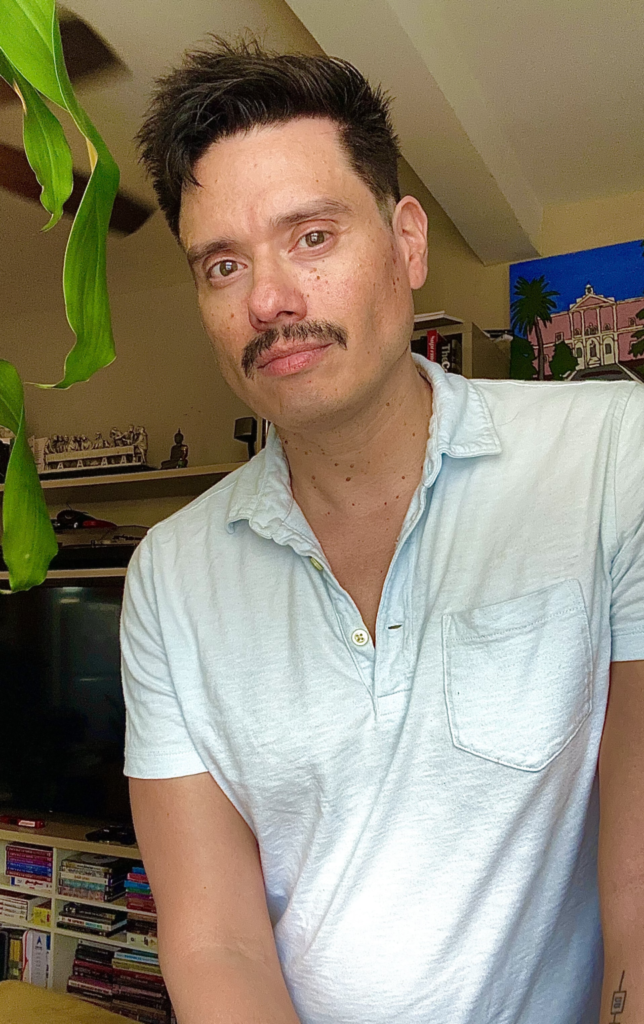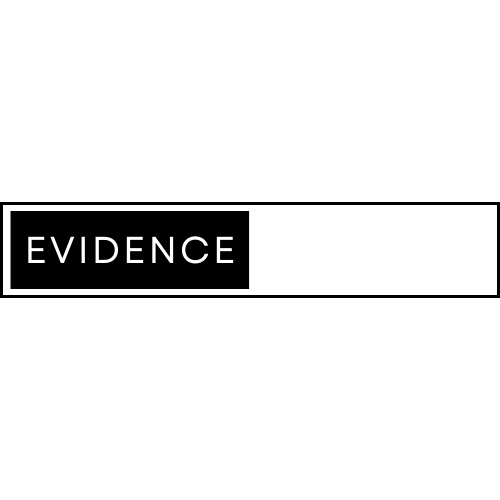LGBTQ+ Youth Mental Health: Innovative Approaches to Meet Need
Julio J. Fonseca

As June kicks off Pride Month throughout the United States and the world, communities gather to celebrate the diversity of the LGBTQ+ community and to support the visibility of so many from the community. Pride Parades and street festivals offer not only celebratory spaces for LGBTQ+ folks and allies but also informational space and, many times, are some of the first in-person large communal spaces for an essential and nascent part of the community: LGBTQ+ Youth.
Amid the festive atmosphere, our community is also tasked to hole the dynamic social and political changes regarding LGBTQ+ rights that bring into focus the vulnerability of LGBTQ+ youth to mental health issues. As of June 7, 2024, there are 516 pieces of anti-LGBTQ legislation in the United States: 333 have been defeated, 39 have been passed into law, 107 have been advancing, and 33 have been introduced. These include bills that intend to redefine sex/gender, ban public accommodations for LGBTQ+ people, enact barriers to accurate IDs, ban access in school facilities, and force outing in schools (American Civil Liberties Union, 2024). The impact of the ongoing onslaught of legislation aimed at erasing identities, rights, and equality is complex. Among some of the most vulnerable in the LGBTQ+ population impacted by these are youth.
LGBTQ+ Youth Mental Health Needs
LGBTQ+ youth report significantly higher rates of mental health issues compared to their heterosexual peers, yet they underutilize mental health services and often find them unhelpful. (McDermott et al., 2021, p. 2-3.) In addition to the legislative attacks, harassment and bullying have significant impacts on LGBTQ+ mental health. A survey by the Gay, Lesbian, and Straight Education Network (GLSEN) in 2019 included 16,713 LGBTQ students aged 13 to 21 from all 50 states. It found that 68.7% of sexual minority youth reported verbal harassment based on their sexual orientation, 56.9% experienced verbal harassment due to their gender expression, and 53.7% faced verbal harassment based on their gender (Madireddy & Madireddy, 2022). Because of this harassment, 59.1% of LGBTQ students felt unsafe at school because of their sexual orientation, 42.5% felt unsafe due to their gender expression, and 37.4% felt unsafe because of their gender (Madireddy & Madireddy, 2022).
The Trevor Project conducted a survey in 2023 with a sample size of 28,524 LGBTQ youth aged 13 to 24 who resided in the United States. The findings demonstrated that for Depression, 54% of LGBTQ+ young people reported experiencing symptoms of depression. Sixty percent of youth identifying as transgender and nonbinary, and more than 40% identifying as cisgender experienced depression. For anxiety, 67% of the LGBTQ+ youth respondents reported experiencing symptoms of anxiety. Seventy percent of those identifying as transgender and nonbinary, and nearly 60% of those identifying as cisgender indicated experienced anxiety.
The survey indicates that 41% of those surveyed seriously considered suicide, with half of transgender and binary respondents and 10 percent of cisgender indicating this. Fourteen percent of those who responded made attempts, nearly 1 in 5 of transgender and nonbinary youth, and almost 1 in 10 of cisgender youth (The Trevor Project, 2023). LGBTQ young people aged 13-17 had much higher rates of self-injury in the past year (63%) compared to those aged 18-24 (41%). Among them, transgender and nonbinary youth reported more self-injury than their cisgender peers (Trevor Project, October 2023).
Practical Approaches to Meet LGBTQ+ Youth Where They Are
A key consideration in all work with LGBTQ+ communities is promoting positive self-regard and resilience while addressing the impact of discrimination and marginalization, a concept known as affirmative practice, which contributes to a strong therapeutic alliance (Craig et al., 2022, p.). This can be challenging, given that LGBTQ+ youth often experience affirming care inconsistently. LGBTQ+ youth may benefit socially and therapeutically from connectedness or participation in group counseling modalities. In addition to in-person group therapy, virtual group therapy offers a lower barrier way to access support for youth patients who may experience more ease and privacy from accessing services in this modality.
The ongoing use of technology, not only societally but by youth who have now only known the digitally oriented world, merits additional exploration of digital interventions and digital mental health (DMH) for LGBTQ+ youth. Research in this domain is emerging, but there is enough to provide some examples here of promising work, as well as considerations for future development. As of February 2022, only one high-value DMH application was available broadly that specifically catered to LGBTQ+ people, highlighting a significant gap in available resources (Cohen et al., 2022). Research demonstrates that LGBTQ+ youth are overrepresented among users of DMH but that relevant content to address their specific needs is significantly lacking (Cohen et al., 2022, p. 1071). DMH offers an opportunity to innovatively address barriers to treatment barriers experienced by LGBTQ+ youth, such as lack of providers, fear of being “outed,” cost, and the need for parental permission/insurance support.
A recent review by Liu et al., 2023, examined 15 studies on how digital tools can assist LGBTQ+ youth with their mental health. They categorized the tools review into the following segments: Structured Formal (S&F) (such as telehealth and online programs); Structured Informal (S&I), such as serious games; Unstructured Formal (U&F), like mobile apps; and Unstructured Informal (U&I), such as social media).
S&F Interventions were highly controlled and standardized, like traditional face-to-face interventions, delivered digitally, and provided consistent, tailored therapeutic interventions. For telehealth, an affirmative cognitive-behavioral therapy modality significantly reduced depressive symptoms and improved stress appraisal among LGBTQ+ youth. Participants reported high acceptability and a sense of community. Other apps and online programs, such as web apps that supported users with gender, queerness, stress, and stigma, demonstrated significant reductions in depression and anxiety, with high user acceptability (Liu et al., 2023, p. 8).
S&I interventions reviewed were therapeutic interventions embedded in engaging and interactive gameplay. They provide a relaxed environment for users to learn and apply therapeutic techniques. Two examples reviewed were SPARX, a computerized cognitive behavioral therapy in the form of a serious game. This was effective for general users in reducing depression but less effective for transgender youth due to a lack of tailored content. Rainbow SPARX, adapted for sexual and gender minority youth, showed a decrease in depressive and anxiety symptoms but had mixed effects in different cultural contexts. The serious game modality showed promise in treating depressive and anxiety symptoms but needs improvements in representation and cultural sensitivity (Liu et al., 2023, p. 8).
U&F Interventions offered more flexibility and customization, allowing users to explore therapeutic strategies at their own pace, were apps and web programs. Q Chat space is a chat-based program where youth join professionally facilitated support groups. It was acceptable and feasible, helping users connect with peers and improve mental health. The TODAY! The app provided real-time resources and daily coaching for coping skills. It effectively reduced depressive symptoms and was highly accepted by users. These interventions were demonstrated to be effective, offering accessible support and education. They can be used anytime, providing continuous access to mental health resources (Liu et al., 2023, p. 9).
U & I interventions presented the modality with the most mixed results regarding potential adverse outcomes: social media platforms. The findings demonstrated challenges with this approach that social media can be beneficial and harmful. The apps can foster resilience and support but also pose risks that must be managed through content moderation and supportive resources (Liu et al., 2023, p. 10)
Future Directions and Considerations
While the mental health statistics for LGBTQ+ youth may appear concerning, they provide an opportunity for clinicians to support them creatively. This article explores unique treatment methods and very recent emerging research to reach LGBTQ+ youth. New and experienced clinicians should use their expertise to back evidence-based prevention programs. LGBTQ+ youth face diverse social environments and often conceal their identity due to safety concerns. Understanding this complexity is crucial for providing effective treatment. What new supportive strategies can help this community?
References
American Civil Liberties Union. (2024). Mapping attacks on LGBTQ rights in U.S. state legislatures in 2024. American Civil Liberties Union. Retrieved June 12, 2024, from https://www.aclu.org/legislative-attacks-on-lgbtq-rights-2024
Cohen, J. M., Feinstein, B. A., & Fox, K. (2022). The Promise of Digital Mental Health for LGBTQ+ Youths. Psychiatric Services (Washington, D.C.), 73(9), 1069–1072. https://doi.org/10.1176/appi.ps.202100569
Craig, S. L., Iacono, G., McInroy, L., Kirkland, A., Pascoe, R., & Kourgiantakis, T. (2022). Demonstrating LGBTQ+ Affirmative Practice in Groups: Developing Competence through Simulation-Based Learning. Clinical Social Work Journal, 50(3), 297–307. https://doi.org/10.1007/s10615-022-00850-2
Liu, Y., Wu, Y. C., Fu, H., Guo, W. Y., & Wang, X. (2023). Digital intervention in improving the outcomes of mental health among LGBTQ+ youth: a systematic review. Frontiers in Psychology, p. 14, 1242928. https://doi.org/10.3389/fpsyg.2023.1242928
Madireddy, S., & Madireddy, S. (2022). Supportive model for the improvement of mental health and prevention of suicide among LGBTQ+ youth. International Journal of Adolescence and Youth, 27(1), 85–101. https://doi.org/10.1080/02673843.2022.2025872
McDermott, E., Eastham, R., Hughes, E., Pattinson, E., Johnson, K., Davis, S., Pryjmachuk, S., Mateus, C., & Jenzen, O. (2021). Explaining effective mental health support for LGBTQ+ youth: A meta-narrative review. SSM – Mental Health, p. 1, 100004. https://doi.org/10.1016/j.ssmmh.2021.100004
The Trevor Project. (2023). 2023 U.S. national survey on the mental health of LGBTQ young people. Retrieved from https://www.thetrevorproject.org/survey-2023/#intro
The Trevor Project. (2023, October). Self-injury and its relationship to suicide attempts among LGBTQ young people. Retrieved from: https://www.thetrevorproject.org/research-briefs/self-injury-and-its-relationship-to-suicide-attempts-among-lgbtq-young-people-oct-2023/

